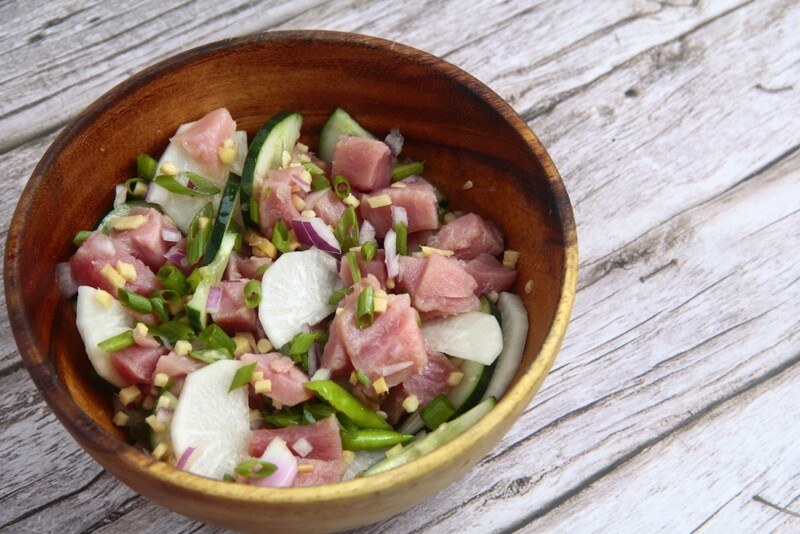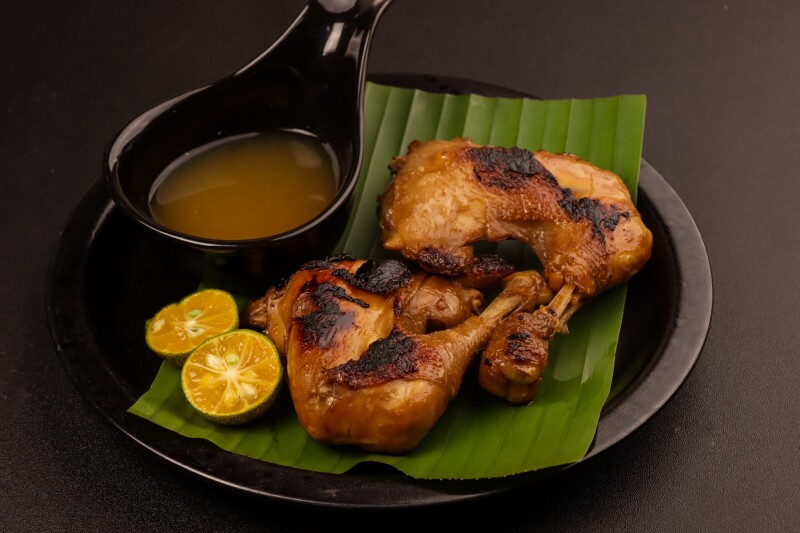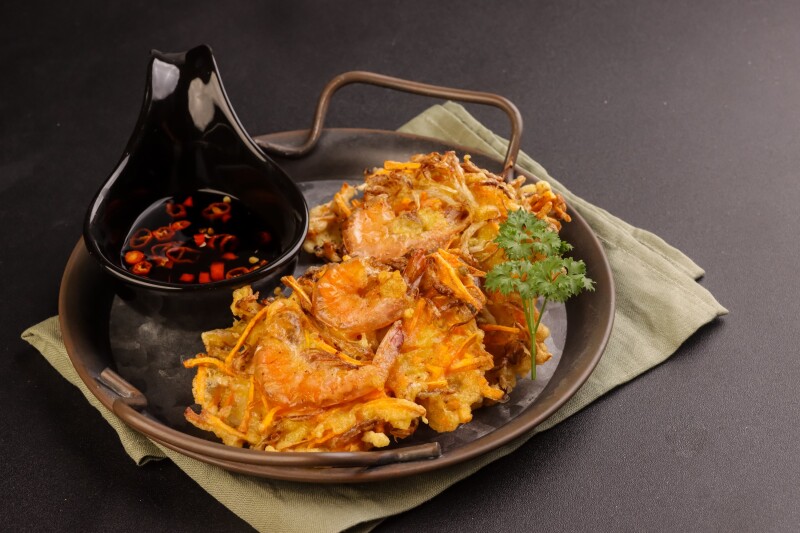Many Filipino foods that have become popular abroad (especially in the USA) are of the fiesta variety—the kinds of dishes you’d serve at a wedding or a debut, a Filipino coming-of-age ceremony for when a woman turns 18. Don’t get me wrong: I love my fill of lumpia and lechon, and I can wax poetic about fast food chain Jollibee feeding the diaspora, but Filipino cuisine has so much variety, with influences from Spanish colonization, Chinese traders, and even the U.S. military.
Growing up, I was blessed with the opportunity to learn about Filipino food from my family’s kitchen. Even after moving out and traveling constantly, I still can’t go too long without Filipino food, and I make very close replicas of my mom’s cooking with the ingredients I have on hand. But whenever I travel to the Philippines to visit family every couple of years or so, I’m reminded: Nothing beats the real thing.
Here’s a guide to the culinary must-tries if you visit the Philippines, spanning foods served in restaurants, on the street, and in the homes of a tita or tito (the loving term for auntie and uncle, respectively).
1. Halo-halo
Tagalog for “mix-mix,” halo-halo is the unofficial dessert of the Philippines. It’s a riff on shaved ice you shouldn’t leave the Philippines without trying, as it demonstrates how varied ingredients can come together to unexpectedly make some amazing flavor. No two restaurants will serve halo-halo exactly the same way, but things you may find in your cup include fruits, bananas, jackfruit, sweet potatoes, sweetened beans, ube, coconut milk, and young coconut. It’s the ultimate cool down when it’s hot outside—which in the Philippines means it’s a year-round treat.

Foods like kilawin (aka kinilaw) showcase the tasty take on ceviche available in the Philippines.
Photo by junpinzon/Shutterstock
2. Kilawin
Also known as kinilaw in the southern Visayas and Mindanao regions of the Philippines, kilawin is similar to ceviche in that it’s raw fish dressed with citrus. But the ingredients are slightly different. “Instead of lime, we use kalamansi, a citrus that tastes like a cross between a key lime and a tangerine. Kilawin is often mixed with things like mangoes and tomatoes—and sometimes coconut milk,” chef Armando Litiatco of F.O.B. in Brooklyn, New York, explains to Afar.

The word kare comes from the word “curry.”
Photo by Create Hot Look/Shutterstock
3. Kare-kare
“Kare-kare is another essential Filipino dish, a stew made of oxtail, tripe, and ground-up peanuts,” chef Litiatco says. “It’s served with shrimp paste [fermented dried shrimp that’s ground and sautéed with onions, garlic, and tomatoes]. It’s a must-try.” Similar in flavor profile to West African maafe, the creamy peanut flavor makes kare-kare stand out. It’s sometimes served as a dinnertime meal but is most commonly seen on special occasions.

Chicken inasal is especially associated with the city of Bacolod and Iloilo province.
Photo by sri widyowati/Shutterstock
4. Inasal
Chicken inasal, also known simply as inasal (from the Hiligaynon term meaning “to roast” or “to grill”), is a simple concept that packs in flavor. The dish features grilled chicken that’s been marinated in vinegar, calamansi juice (calamansi is a lemon-lime fusion commonly grown in the Philippines), garlic, and lemongrass. You’ll easily find inasal in barbecue joints throughout the Philippines, like in well-loved fast food chain Mang Inasal—don’t forget to order a side of white rice.

Ukoy makes for a tasty, fried treat.
Photo by sri widyowati/Shutterstock
5. Ukoy
Ukoy is a type of fritter that’s typically eaten with white rice or as a snack. It’s made by mixing flour batter with an assortment of items, including mung bean sprouts, shrimp, carrots, and taro root. This crispy patty is best eaten with a spiced vinegar sauce for dipping.

Tortang talong means “eggplant omelette” in Tagalog.
Photo by Alexander Prokopenko/Shutterstock
6. Tortang talong
Tortang talong is, in my opinion, the best way to eat an eggplant. Making the dish correctly starts with roasting a Chinese eggplant until it chars for a smoky flavor. Then the softened eggplant is mashed into an egg mixture with some fish sauce and pepper. The whole thing is fried and then enjoyed with some white rice and vinegar dip. It’s similar in consistency and taste to baba ganoush, but it is definitely more of a substantial meal than a side.

Sinigang is known for its sour and savory flavor.
Photo by Kravtzov/Shutterstock
7. Sinigang
Sinigang is a sour soup—think tom yum but less spicy and sweet—that’s especially common in the northern Tagalog region of the Philippines but has been widely appreciated and proliferated throughout the country. Ingredients for this meal consist of meat or seafood (typically pork or fish) stewed with tamarind, tomatoes, garlic, and onions. It’s accompanied by white rice and best served on those days when you need some real comfort food.

The annual sisig festival in Angeles, Pampanga, started in 2003.
Photo by bonchan/Shutterstock
8. Sisig
You’ll probably hear this dish before you see it as it comes sizzling on a black skillet. On it is a delicious array of meat (usually pork cheek, pork ear, pork belly, chicken liver) and some onions, chili peppers, and calamansi citrus on the side. It’s best enjoyed with a cold beer, and as the late Anthony Bourdain recommended, top it with a runny egg for an exponentially better experience.
Sisig comes from the Pampanga region (about an hour drive northwest of Manila), where it’s very much celebrated: The region’s Angeles City is known as the Capital of Sisig and even hosts an annual festival every December.

Taho vendors can usually be spotted carrying two large aluminum buckets from the ends of a carrying pole.
Photo by MDV Edwards/Shutterstock
9. Taho
Tahooooo! In many provincial areas of the Philippines, you may hear people carrying large aluminum buckets shouting this word in the streets. These vendors are serving up taho, a Filipino snack food that’s made of fresh soft or silken tofu and sago pearls (similar to tapioca pearls you’d find in bubble tea) and topped with a sweet brown syrup known as arnibal. You’ll usually see taho sold in the mornings and noon for the breakfast and lunch crowd, as it makes for an economical snack or light meal. Depending on the size, you’ll only be out between $.25 and $1 for a cup.

Silog is the Filipino answer to an English breakfast.
Photo by Joshua Resnick/Shutterstock
10. Silog
Filipino food shines at breakfast, and a Filipino breakfast isn’t complete without some form of silog. It is a smattering of different breakfast staples similar to the English breakfast, except the main components of silog are garlic fried rice, an egg sunny side up, and some sort of savory meat. The type of meat that you order dictates your type of silog. Tapsilog features tapa (cured meat), while longsilog includes longanisa, a sausage that derives from Spain. Spamsilog features—you guessed it—Spam, which was brought here by U.S. service members during World War II.

While the U.S. has chicken noodle soup, the Philippines has tinola.
Photo by sri widyowati/Shutterstock
11. Tinola
My personal favorite Filipino dish, tinola is a light soup that’ll power you through the day. The main components of this concoction are chicken, chayote (a green gourd that thrives in Southeast Asia as well as other parts of the world with a warm to hot climate), and some leafy vegetables. The ginger and onion give it a cozy flavor, and a side of steaming white rice is a must. Tinola is found in plenty of restaurants (and homes), as it’s considered a casual, everyday food.










